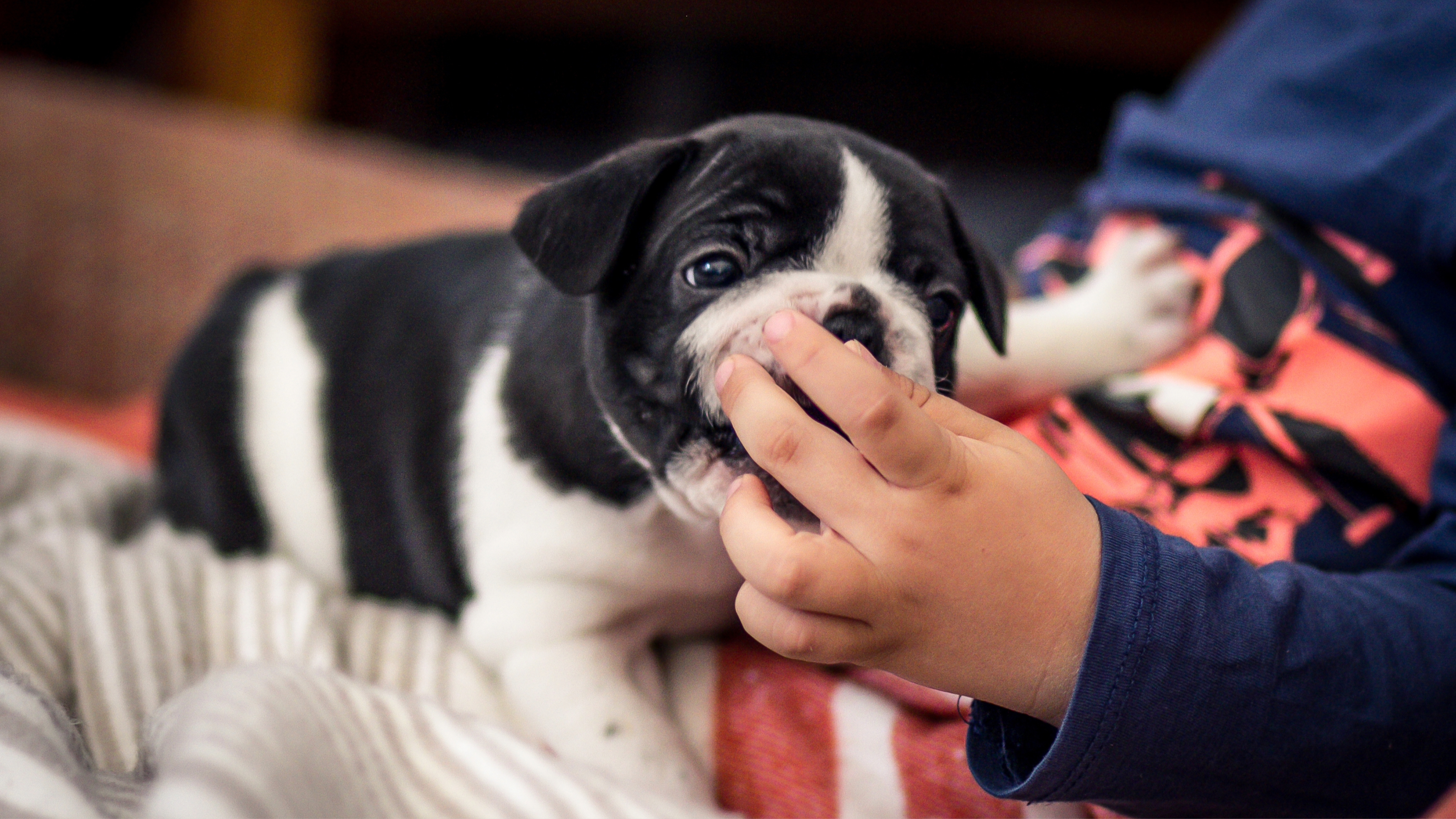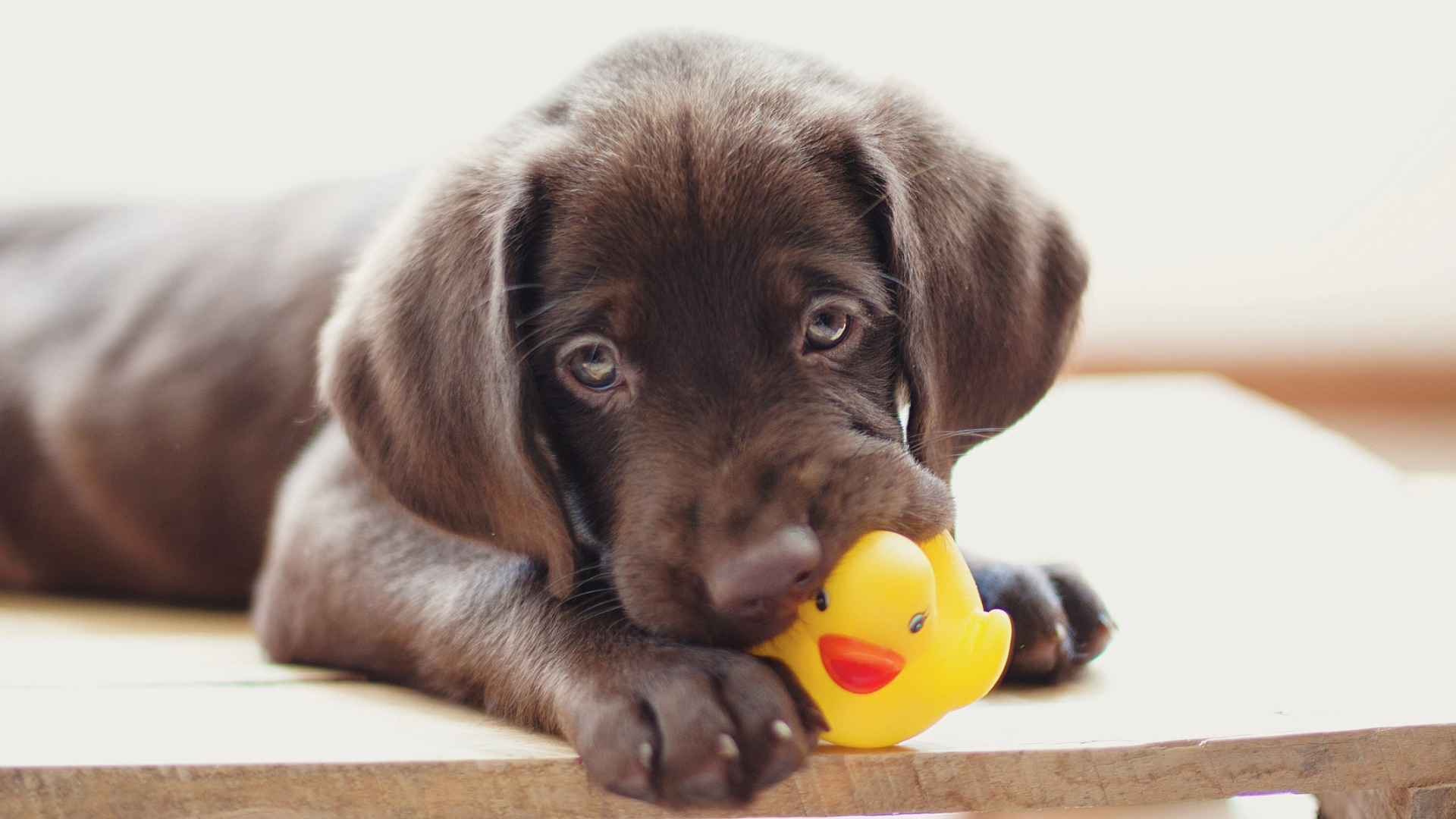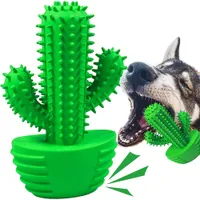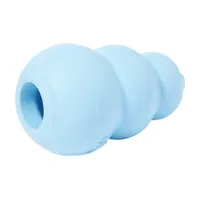Puppy teething: Vet reveals what to expect at every stage
Curious about puppy teething? Here's everything you need to know...

Is your puppy teething? If so, you may be wondering how long this stage will last for and exactly what you can do to help. Not only can it be challenging for you as a pet parent to watch your pup in pain, teething can also bring with it some problematic behaviors, such as biting and chewing.
The best puppy teething toys are brilliant for helping to soothe sore gums and they also provide your pup with appropriate chewing outlets – making them a real lifesaver when it comes to saving your furniture and clothing.
But aside from helping to make your fur friend more comfortable, you may be wondering how long does puppy teething last and what you can expect during that time. That’s where this guide from expert vet Dr. Rebecca MacMillan will come in handy.
Below, she walks you through each of the puppy teething stages, the symptoms to be on the lookout for and the most common behaviors you might see your puppy engaging in. She also shares her top tips on how you can ease your puppy’s pain and how to look after your dog’s teeth as they age.
Puppy teething stages
Puppies are like people in that they have a set of deciduous (milk or baby) teeth which are later shed and replaced with adult teeth as they grow – here are the main teething stages to be aware of:
- Newborn Puppies are born without teeth; they don’t require any when they are solely fed by their mother.
- 2 - 4 weeks Puppies’ teeth start to erupt and break through the gums, at around the same time their eyes and ears start to open. They will still be solely drinking milk at this stage.
- 5 - 6 weeks Their puppy teeth will be mostly through by now and you can help by offering them soft puppy foods to try and tackle. Puppies will have 28 deciduous (baby) teeth in total.
- 4 - 5 months of age Dogs start to lose their deciduous teeth around this age – this is the stage of teething that you are most likely to notice. They might be swallowed by your pet, or you might notice them around in the house. Sometimes there is a small amount of bleeding when a tooth is lost. The small incisors at the front of the mouth are usually the first teeth to go, with the larger teeth being later on. We’ll look at how to help your pup manage his teething a bit later on.
- 6 months and older Your puppy will have lost all his deciduous teeth and will have all 42 of his permanent teeth.
Puppy teething symptoms

You may notice your puppy is teething because you find shed baby teeth at home, or perhaps you notice a bit of blood in his food bowl or on his toys. However, there are also some other symptoms to look out for:
- Increased chewing behaviour
- Slower to eat his meals
- Increased drooling
- Whining or crying a bit more than usual
- Gums appear inflamed
- The emergence of new adult teeth
What behaviors does a teething puppy exhibit?
Puppies that are teething may be chewing more than usual, a bit slower to eat their meals, drool more often and could have inflamed gums. Sometimes you may notice teeth that have been shed in the house or a little bit of bleeding on his chew toys. You might want to read our guide on how to stop a puppy chewing.
Get the best advice, tips and top tech for your beloved Pets
Apply dog toothpaste to this chew toy and get your dog to chew it off. The bristles will help clean their teeth and your dog will love the challenge.
What can I give my puppy for teething?
Understandably, you are probably wondering what you can do to help your puppy through the teething process. While some pups just seem to get on with it, others can be downright uncomfortable. Why not try the following to help ease your puppy’s symptoms?
1. Provide plenty of chew toys
Taking home a puppy for the first time can be super exciting, but the teething phase can certainly bring with it some challenges. If you don’t want your shoes and other possessions chewed, then make sure you are providing your puppy with plenty of chew toys. Give him a variety of textures, some pups like something firm to bite down on, and others want something softer or more textured.
This durable teething toy is perfect for pups who will chew anything they can get their paws on. Our tester Sophie gave it to her dog, Wallie who also enjoyed playing hide and seek with it. She notes that it’s great for tiring out an energetic pup and is easy to clean in the dishwasher.
2. Frozen toys
Try freezing or chilling some of your pup’s toys. The cool temperature will be very soothing for inflamed gums. Soaking soft or fabric toys in a bit of water first will make them even cooler. Have a look at our homemade puppy teething toys and treats for more ideas or check out a vet’s answer to “Can dogs eat ice cubes?”
3. Try feeding softer food
If your puppy is struggling with his normal feed, then increase the proportion of wet food or try soaking his kibbles to soften them. If your puppy’s mouth is sore, he may appreciate this!
4. Puppy proof your home
Make sure your belongings stay safe. Put valuable items out of reach, your shoes away in cupboards or storage chests and limit your puppy’s access to certain parts of your home unless supervised. This will not only keep your dog safe but also your possessions too.
Check out our guide to how to puppy proof your house for detailed tips on how to take care of every room in your home.
How long does teething last in puppies?

Teething can last up to two months in some puppies. If your dog still has some of his baby teeth beyond six months of age, then these could be classed as retained and may need veterinary attention.
Caring for your puppy's teeth
Teeth brushing is an important part of caring for your dog’s teeth and should be performed daily to be most effective. This can be introduced when as a puppy. Begin by letting your pup lick a dog-specific toothpaste from your fingers. These are often meaty flavored and are lower in fluoride than human pastes. Then let them lick it off a soft bristle brush before you think about any actual brushing.
Here’s more help with how to brush your dog’s teeth and how else you can clean your dog’s teeth without brushing.
Keep sessions short, initially and build things up gradually. You can also keep your puppy’s teeth healthy by avoiding hard treats or chews. Things like bones (cooked or raw), antlers, and some rawhide treats are too hard and could lead to painfully fractured teeth.
Virbac CET Enzymatic Toothpaste
Formulated using an exclusive dual-enzyme system, this toothpaste reduces plaque and freshens the breath. Because it contains no foaming agents, it's safe for your pet to swallow and it comes in a choice of five flavors.
How to stop a puppy nipping
If your puppy is teething you may find he wants to chew hands and fingers as well as his toys, but you mustn’t allow him to mouth you in this way. It will cause confusion going forwards and may encourage nipping behavior. Instead, replace your hands with a chew toy, and praise your pup for playing nicely. Check out our separate guide on how to stop a puppy biting, mouthing or nipping for more information.
Teething is a natural process that all puppies go through. Hopefully, our tips will help keep your pup as comfortable as possible but don’t hesitate to contact your vet if you are worried something doesn’t seem right.
Are you questioning, ‘Why does my puppy eat everything outside?’ A vet has the answers in this guide. You might also be interested in reading our top teething puppy tips and puppy checklist . Or, are yak chews safe for dogs?
Rebecca is a veterinary surgeon who graduated from the Royal Veterinary College in London in 2009. She enjoys medicine in particular and she is proud to have achieved a BSAVA postgraduate certificate in small animal medicine (with commendation) from Nottingham Trent University in 2021.
She has a wealth of experience in first opinion small animal practice, having done a mixture of day-to-day routine work, on-call emergency duties and managerial roles since 2009.
She writes on various feline and canine topics for the Veterinary Content Company and a freelance basis, including behavior, nutrition, and health. Outside of work and writing she enjoys walking her own dog, spending time with her young family and baking!
- Kathryn WilliamsFreelance writer




